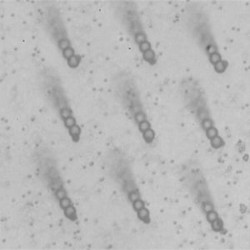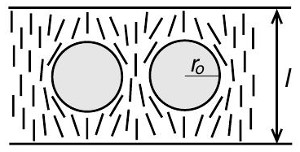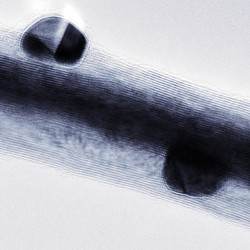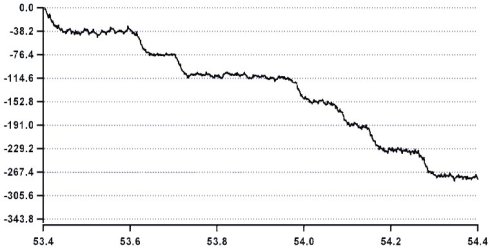
Magnetic liquid crystals
Currently my main interest are magnetic liquid crystalline systems. Ever since first magnetic nematic liquid crystals were discovered by my co-workers, this topic is rapidly evolving and remains super interesting. We incorporate magnetic nanoplatelets into different systems, including nematic liquid crystals, isotropic alcohols, or LC elastomers.
Liq. Cryst. 48, 1815-1826, 2021
And some optical switching of nonmagnetic bent-core liquid crystals in between:
Liq. Cryst. 50, 1599-1607, 2023
Biomimetic systems
A lot of interesting work was done on biomimetic systems, creating and studying
systems that resemble the ones found in the nature. We have
successfully created artificial cilia that pump fluid and several
kinds of artificial microswimmers. The results were published in
PNAS and Biomicrofluidics and featured in News & Views section
of Nature Physics. The work is done
in collaboration with
Faculty of Mathematics and Physics.
Beilstein J. Nanotechnol. 3, 163, 2012 (download pdf)
Biomicrofluidics 5, 034103, 2011 (download pdf)
Proc. Natl. Acad. Sci. 107, 1844, 2010 (download pdf)
News in Nat. Phys. 6, 8, 2010 (download pdf)


Nematic colloids
My other interest are liquid crystals, especially nematic colloidal systems. We study interactions between colloidal particles in anisotropic liquids by magneto-optical tweezers. The setup is a combination of optical tweezers with magnetic field, which allows manipulation of superparamagnetic beads. Interesting phenomena have been observed and the results were published in two Phys. Rev. Lett. papers. Also this work is done in collaboration with Faculty of Mathematics and Physics.
Phys. Rev. Lett. 101, 237801, 2008 (download pdf)
Proc. of SPIE 7038, 70381W, 2008 (download pdf)
Phys. Rev. Lett. 96, 207801, 2006 (download pdf)
Mol. Cryst. Liq. Cryst. 450, 297, 2006 (download pdf)
Nanomaterials
I'm also involved in research of nanomaterials, especially decoration of molybdenum-based nanowires and nanotubes with noble-metal nanoparticles. The decoration of the nanomaterials is the key to a broad range of applications of these materials.
ChemPlusChem, e202400480, 2024
R. Soc. Open Sci.7, 200783, 2020
Mat. Chem. Phys. 226, 20, 2019
RSC Adv. 6, 90806, 2016 (download pdf)
Mat. Lett. 159, 333, 2015 (download pdf)
J. Nanopart. Res. 15, 1791, 2013 (download pdf)


Anchoring of liquid crystals
A lot of research was done on interactions between liquid crystals and aligning surfaces. Using dynamic light scattering experiment, the anchoring coefficients of nematic liquid crystals (5CB and 8CB) on aligning layers (nylon and photoactive PVCi) were determined and the temperature dependence of the anchoring coefficients was observed. The experimental method is based on observations of thermally excited orientational fluctuations in the sample.
Liq. Crys. 40, 1646, 2013 (download pdf)
Phys. Rev. E 68, 031704, 2003 (download pdf)
Phys. Rev. E 65, 041712, 2002 (download pdf)
Phys. Rev. E 63, 061709, 2001 (download pdf)
Molecular Motors
I was also involved in single molecule biophysics in collaboration with Matthias Rief and his group at (now) TU Munich. Working with combined optical tweezers and fluorescence microscopy experiment we investigated the stepping kinetics of molecular motor Myosin V under different external conditions, i.e. external load. The motor can be pulled in both directions - forwards and backwards - and under extreme conditions, we observed backward steps - which should be forbidden!
Biophys. J. 88, 4402, 2005 (download pdf)
